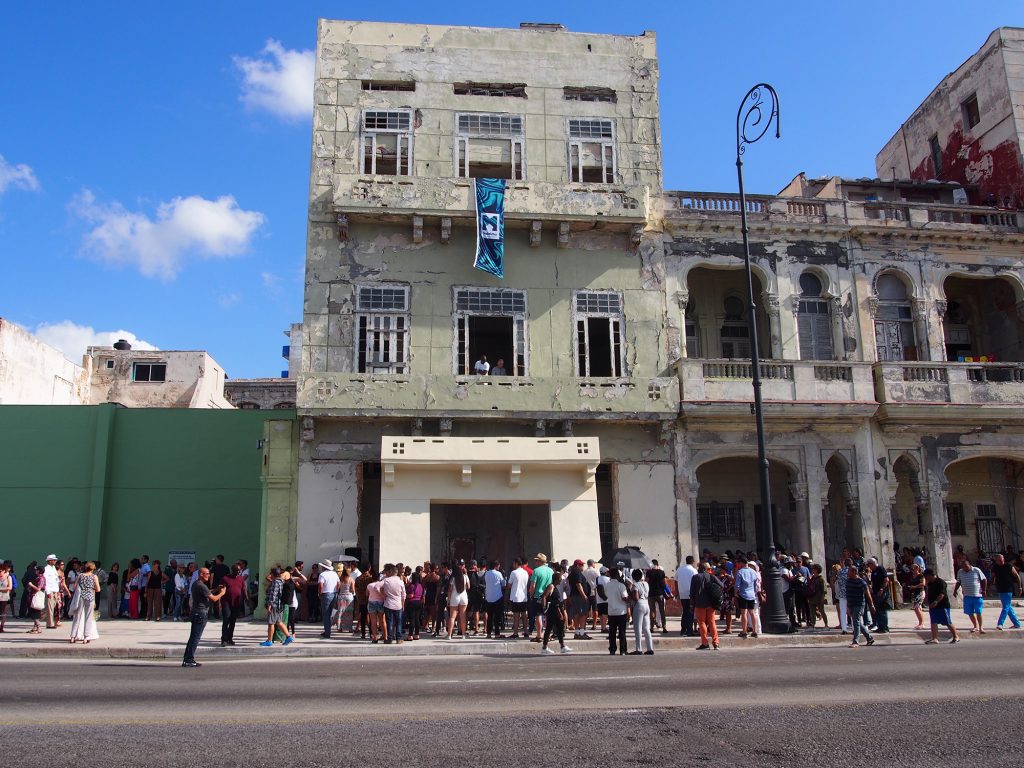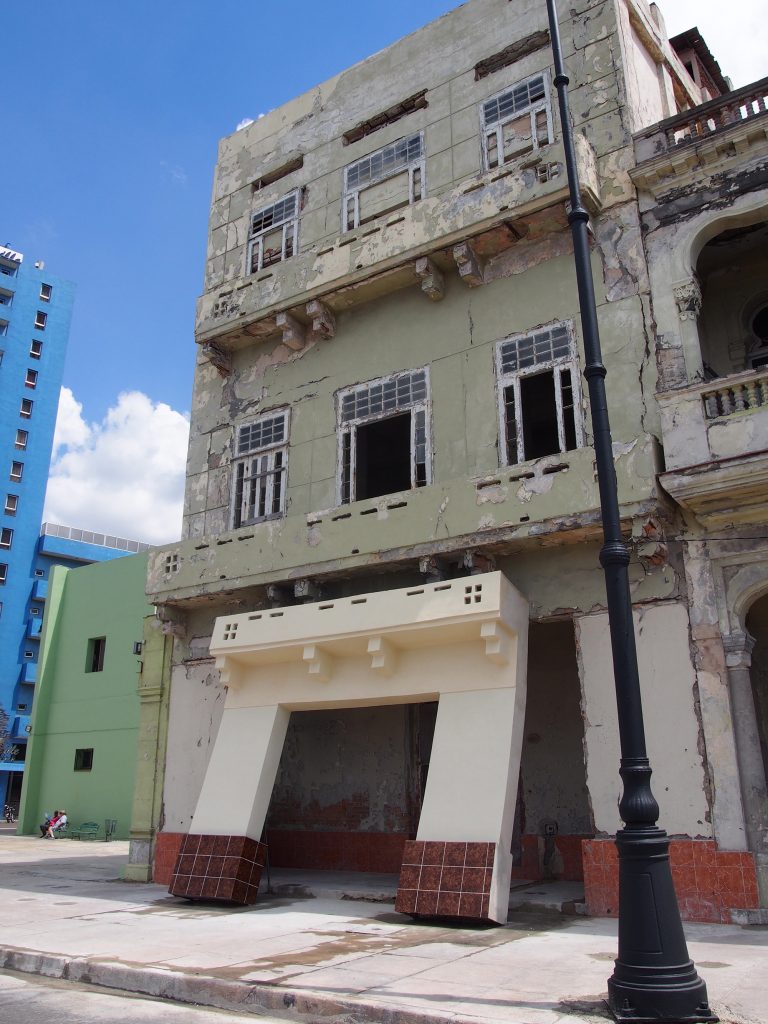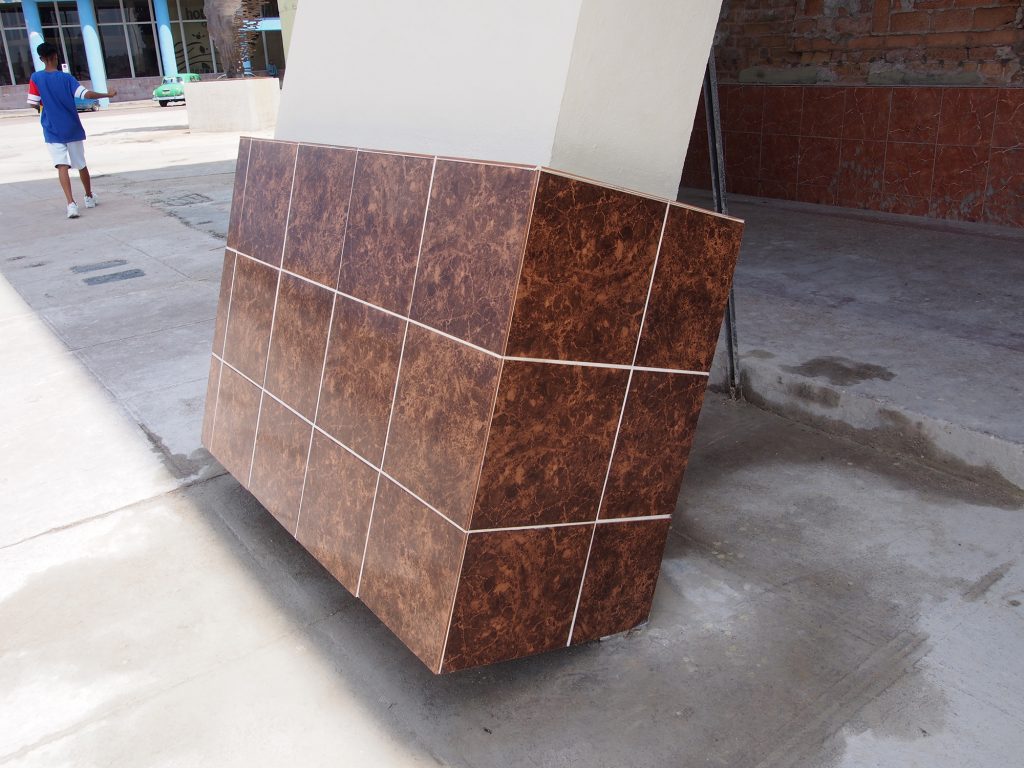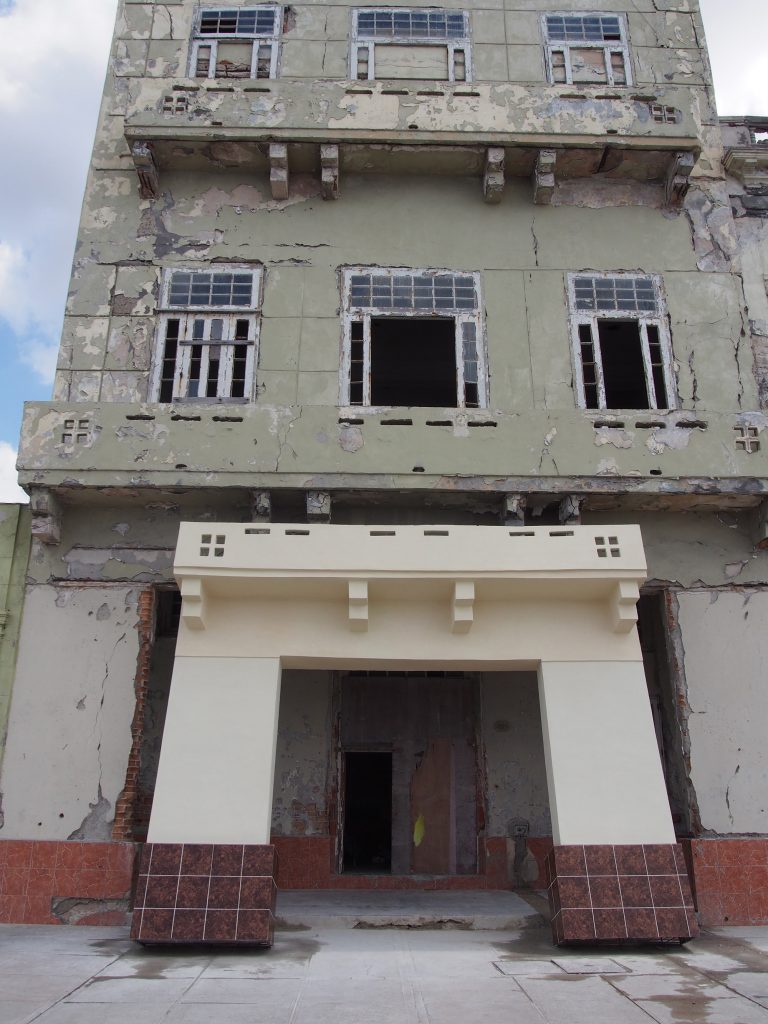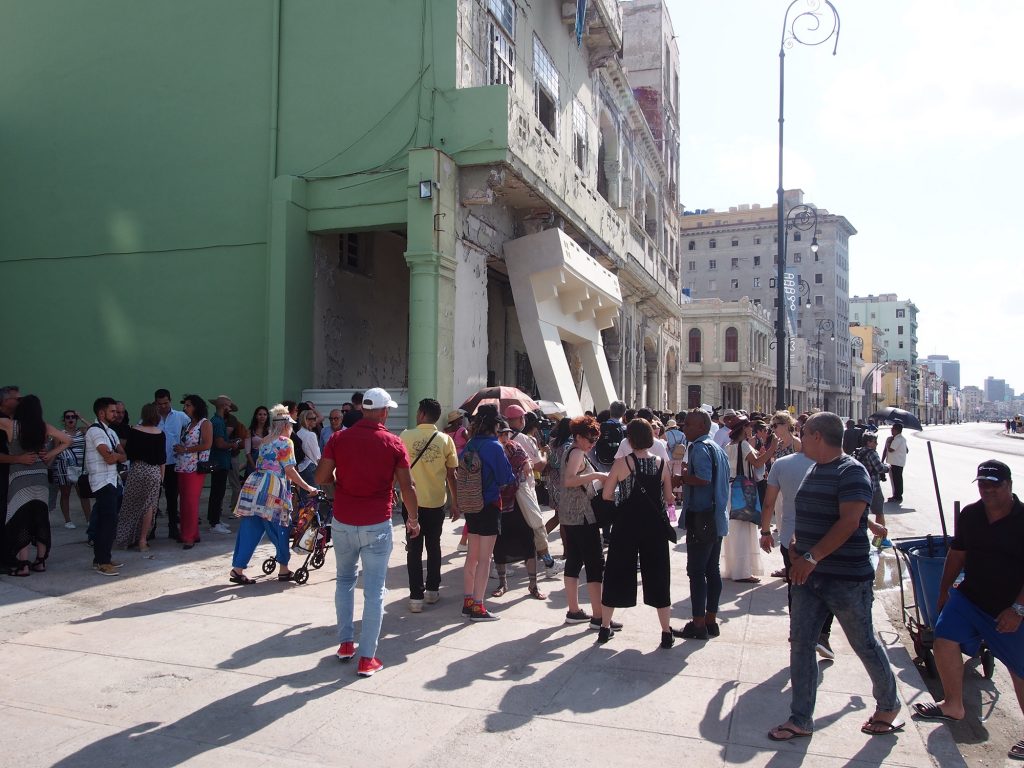Sculpture, 2019
Metal, cement, sand and paint. pigment and plastic F18
Dimensions: 600 x 760 x 120 cm
In politics and economics, the term Potemkin village refers to the events that occurred in the Crimea in 1787. It ́become an expression that encompasses any construction (literal or figurative) built solely to deceive others into thinking that a situation is better than it is. The stories tell that Grigory Potemkin (Governor of region Crimea after being conquered by Russia in the XVIIIth century) would quickly set up gorgeous fake facades and villages, complete with fake inhabitants only to impress Empress Catherine II and her guest’s ambassadors during her visit to the region of Crimea in 1787.
Overnight, these fake villages would be dismantled and set up later further downriver as the ambassadors were traveling by boat.
Metaphorically I appropriate this story and also the historical meaning of the facade to discuss topics of my interest in the art scene, in this particular case the art institutions in Cuba.
In April 2018 the new President of Cuba signed a new law, the decree 349 which legalizes and institutionalizes the censorship of independent art and culture, establishes as violations of the artistic services that are not regulated or recognized by the official cultural institutions of the island. Those creators who act against this decree can be penalized even with jail time.
When this attitude is institutionalized on the island, the art institutions have a double functionality, by the fact of being controlled and operated by the communist party and the political agenda of the government, institutions like museums, art Galleries, art events, cultures houses have lost their autonomy to decide and show proliferation artistic expressions because everything has to be filtered by the constricted censorship of the Government.
My proposal for the thirteenth edition of the Havana Biennial consists in reproducing in natural size the facade of Hispanic American Culture Center building. This Center is ascribed to the Office of the Havana City Historian, which primordial line is work towards the exaltation and promote the interests and ideology of the Cuban State in the new generations.
This copy or reproduction will be superimposed as a dislocated collage on top of the facade of an old building located near to the sea. The location is not random, was in this old building where was a first attempt to open the barrier of the censorship. A space to promote visual independent art in all its manifestations in his most democratic and free forms. Unfortunately, the utopia still not found a place and has lost faith due to lack of resources and state aid.
This piece metaphorically makes a slight reference to William Burroughs cut-up technique. When we cut-up into the present the future leaks out. Perhaps it’s my way of editing the present.
